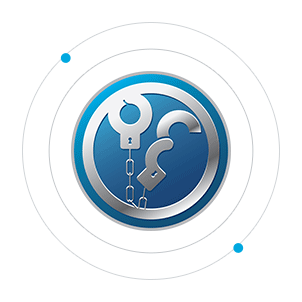How You Can Remove Your Private Data from the Web
Our personal information is constantly collected, stored, and shared online – whether we know it or not. The risk of identity theft and fraud looms larger than ever before. With the proliferation of social media platforms, online shopping, and digital transactions, individuals inadvertently leave behind a digital footprint that malicious actors can exploit.
The consequences of having one's personal data exposed can be dire, ranging from financial loss to reputational damage and even legal troubles. Individuals must take proactive steps to safeguard their identity and remove their personal information from the vast expanse of the internet.
Scam Detectors Most Trusted Websites in Online Security
- Guard.io (100): Surf the web safely. Clean up your browser, remove maliscious extensions and check for privacy violations.
- Incogni.com (100): Delete your personal data from the internet and protect against scams and identity theft.
- ExpressVPN (100) Stay secure and anonymous online - Best VPN Out There
- IPVansish (100) Fast VPN to stay safe and secure online with multiple discount plans.
In this article, I will show you how to remove your information from the internet in the best way possible and share some steps for protecting it on a regular basis. Let's dive in.

The Dark Web and the Danger of Personal Information Exposure
The internet has become a treasure trove of personal data, with individuals' information readily accessible to anyone with an internet connection. From names and addresses to credit card numbers and social security numbers, a plethora of sensitive data is scattered across various online platforms. Cybercriminals often target this information to perpetrate identity theft, fraud, and other malicious activities.
One of the most significant dangers of personal information exposure is identity theft. Through this, criminals use stolen data to impersonate individuals, access their financial accounts, and make unauthorized transactions.
Identity theft can wreak havoc on victims' lives, causing financial ruin, emotional distress, and long-lasting repercussions.
Furthermore, the proliferation of the dark web exacerbates the risks associated with personal information exposure. The dark web, a hidden part of the internet not indexed by traditional search engines, serves as a marketplace for illicit goods and services, including stolen data.
Cybercriminals frequent the dark web to buy and sell personal information, making it easier to exploit unsuspecting individuals.
How You Can Delete Your Private Data from the Internet
In response to the growing threats of online privacy breaches, a new wave of privacy protection services has emerged to help individuals reclaim control over their personal information. One such service is Incogni, a pioneering platform specializing in removing personal data from the internet and safeguarding users' privacy.
Incogni employs advanced algorithms and techniques to scour the internet for traces of individuals' personal information. It facilitates its removal from various online sources. Incogni is a powerful data removal tool that sends data removal requests to over 180+ data brokers on your behalf to prevent suspicious websites from profiling you or using your data for identity theft.
As a Scam Detector reader, you can exclusively get a 55% discount on all Incogni’s annual plans by using code “SCAMDETECTOR” – you can claim it HERE.
The Importance of Removing Personal Information
The significance of removing personal information from the internet cannot be overstated. Individuals can mitigate the risks of identity theft, fraud, and privacy breaches by erasing digital footprints and minimizing online exposure.
Moreover, removing personal data helps preserve individuals' autonomy and control over their online identities, allowing them to navigate the digital landscape confidently and safely.
7 Steps to Protect Personal Information
In addition to utilizing privacy protection services like Incogni, individuals can take proactive measures to safeguard their personal information from the web and dark web. Here are some essential steps to consider:
- Conduct Regular Privacy Audits: Routinely review your online accounts, social media profiles, and digital footprint to identify and remove unnecessary or sensitive information.
- Strengthen Security Settings: Optimize privacy settings on social media platforms, web browsers, and other online accounts to limit the visibility of personal information to the public.
- Use Strong, Unique Passwords: Create strong and unique passwords for each online account and consider using a password manager to store and manage login credentials securely.
- Enable Two-Factor Authentication: Add an extra layer of security to your accounts by enabling two-factor authentication, which requires a second verification form, such as a code sent to your mobile device.
- Be Cautious of Sharing Personal Information: Exercise caution when sharing personal information online, especially on social media platforms and websites with questionable security practices.
- Monitor Financial Accounts: Regularly monitor your bank accounts, credit cards, and financial statements for unauthorized transactions or suspicious activity.
- Stay Informed: Stay abreast of the latest cybersecurity threats and best practices for protecting personal information online.
Conclusion
In an era where personal information is a prized commodity for cybercriminals, safeguarding one's identity has never been more critical. By taking proactive steps to remove personal information from the internet and implementing robust privacy protection measures, individuals can significantly reduce their vulnerability to identity theft, fraud, and privacy breaches.
Services like Incogni play a vital role in this endeavor, offering users a comprehensive solution for reclaiming control over their online identities and preserving their privacy in an increasingly digital world.
However, individual vigilance and proactive cybersecurity practices remain paramount in the ongoing battle against online threats.
How To Report Suspicious Platforms
Let your family and friends know how to remove their personal information from the Internet. Feel free to share the article if it was helpful.
Meanwhile, you can report scammers and suspicious platforms to the Federal Trade Commission, the Office of the Inspector General, and the FBI Internet Complaint Center by using the pages below:
Report To The FTC
Submit Claim To The Office of the Inspector General
Report To The FBI Internet Complaints Center
How To Protect Yourself More
Do you want to receive alerts about the most notorious scams on a regular basis? Subscribe to our scam alerts. You will receive periodic emails from Scam Detector with exclusive tips. Those will include info on how to prevent fraud and insights about the newest tools you can use to fight crime.
Feel free to explore additional articles on related fraud. You can find them listed below this paragraph, so that you know more about online security. Last but not least, if you had any bad experiences, make sure to use the comments section below to expose other scammers.
Verify a website below
Are you just about to make a purchase online? See if the website is legit with our validator:
vldtr®


TOP 4 MUST-WATCH FRAUD PREVENTION VIDEOS
1. Top 5 Amazon Scams in 2024 2. Top 5 PayPal Scams in 2024 3. How To Spot a Scam Email in 2024
- Latest Posts by Selma Hrynchuk
-
How To Stop Robocalls
- -
Taking Control of Your Data Privacy: Protecting Yourself in 2024
- -
Geek Squad Scam: The Renewal Trick
- All Posts














I have received several scam emails purportedly from PayPal regarding some payment I supposedly made to purchase something or other. I generally go directly to PayPal to verify whether the purchase shows up. I also forward the email to [email protected], because they always want to know about scams professing to be PayPal.